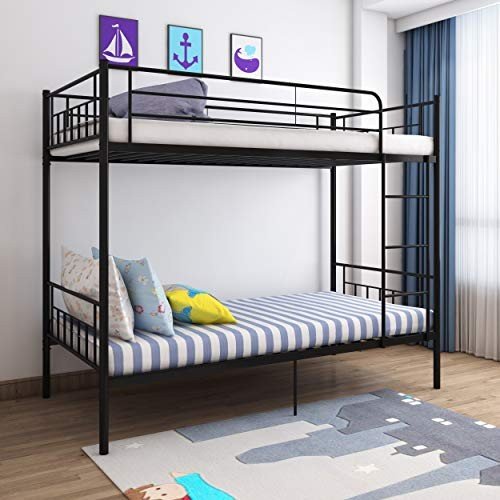A Comprehensive Guide to Children's Bunk Beds: Styles, Benefits, and Safety Considerations
Bunk beds have become a popular option for families looking to optimize space and provide an enjoyable sleeping environment for children. With their special design, they use an innovative and practical service for shared bedrooms, playrooms, or even guest accommodation. This article explores the different designs of kids's bunk beds, their benefits, safety considerations, and addresses some regularly asked questions.
The Allure of Bunk Beds
Kid's bunk beds are more than just space-saving structures; they are likewise a gateway to adventurous dreams and creative play. Below is a comprehensive evaluation of their numerous advantages.
Benefits of Bunk Beds
- Space-Saving: Bunk beds effectively utilize vertical space, making them a perfect choice for smaller spaces.
- Playful Design: Many bunk bed styles include slides, camping tents, and themed aspects, triggering imagination and enjoyment.
- Partner Sharing: Bunk beds are perfect for brother or sisters sharing a room or accommodating sleepovers.
- Versatile Use: Some models can be separated into two specific beds, using flexibility as kids grow.
- Storage Options: Many bunk beds include built-in drawer storage or racks, even more boosting their functionality.
Designs of Children's Bunk Beds
The range of bunk beds available today accommodates various preferences and needs. Below is an overview of some popular styles.
| Design | Description | Best For |
|---|---|---|
| Standard Bunk Bed | A standard style featuring one bed stacked above another. | Siblings sharing a space. |
| Loft Bed | Similar to a bunk bed without the bottom bunk, enables an office or play area below. | Restricted space for play/desk. |
| L-Shaped Bunk Bed | 2 beds arranged in an L-shape, typically with additional areas for storage or play. | Unique room layouts. |
| Twin Over Full | A twin bed over a complete bed, accommodating different sleep requirements. | Growing kids and teens. |
| High Sleeper | Stands even greater than a loft bed, usually including a desk or play area listed below. | Older kids needing more play/desk space. |
| Tent Bunk Bed | Bunk beds with a canopy or tent-like structure, producing a comfortable, enjoyable space. | Active and creative kids. |
Secret Features to Consider
When choosing the best bunk bed for kids, the following features are worth considering:
- Material: Bunk beds can be made from wood, metal, or a combination. Each has its special aesthetic and toughness.
- Weight Capacity: Always verify the weight limit of the bunk bed to ensure it can accommodate your kids securely.
- Security Rails: Ensure the leading bunk has tough rails to prevent falls.
- Ladder Security: A well-designed ladder should provide simple and safe access to the upper bunk.
- Finishing: Ensure any finishes are non-toxic and safe for kids.
Safety Considerations
Safety is vital when it pertains to kids's bunk beds. The following standards should be complied with:
- Age Appropriateness: Generally, kids under 6 years old must not sleep in the upper bunk due to safety threats.
- Strong Construction: Ensure the frame and materials are solid and can support the weight without sagging.
- Regular Maintenance: Periodically inspect for loose screws, bolts, or other parts that may need tightening.
- Clear Play Area: Keep the location around the bunk bed without toys and obstacles to decrease tripping risks.
Setting Rules for Safe Use
Establishing guidelines for bunk bed use will assist guarantee safety:
- Limit Jumping and Climbing: Children should be advised against leaping from the top bunk and getting on the sides.
- Supervising Sleepovers: Monitor young guests while they are utilizing the bunk bed for the first time.
- Educate on Ladder Use: Teach how to use the ladder securely, highlighting the importance of facing the ladder when going up or down.
Often Asked Questions
1. What this hyperlink is appropriate for a child to oversleep the top bunk?
Most producers recommend that kids should be at least six years old to sleep in the upper bunk. This guideline is developed to alleviate the risk of falls.
2. Can bunk beds be personalized?
Yes, lots of producers provide personalized options, including colors, materials, and extra functions like drawers or desks.
3. Are bunk beds safe for weight?
Bunk beds have weight limits, normally varying from 200 to 400 pounds, depending on the design and material. Constantly check the maker's requirements.
4. How do I preserve and clean a bunk bed?
Routinely look for loose parts, keep the bed tidy by cleaning down surface areas, and guarantee the bedding is fresh to promote a safe and hygienic sleep environment.
5. Can bunk beds be separated into private beds?
Lots of bunk beds feature an alternative to separate them into 2 individual beds, supplying long-term flexibility.
Children's bunk beds are more than simple furniture; they are a practical, versatile, and creative component of a child's room. With numerous designs offered and numerous safety considerations to keep in mind, moms and dads can choose the ideal bed that fits their space, meets their kids's needs, and imparts a sense of experience. By understanding the benefits, designs, and precaution associated with bunk beds, families can create a delightful and safe sleeping environment for their children. Whether for brother or sisters sharing a room or space-saving services, bunk beds remain a precious option for many homes.

